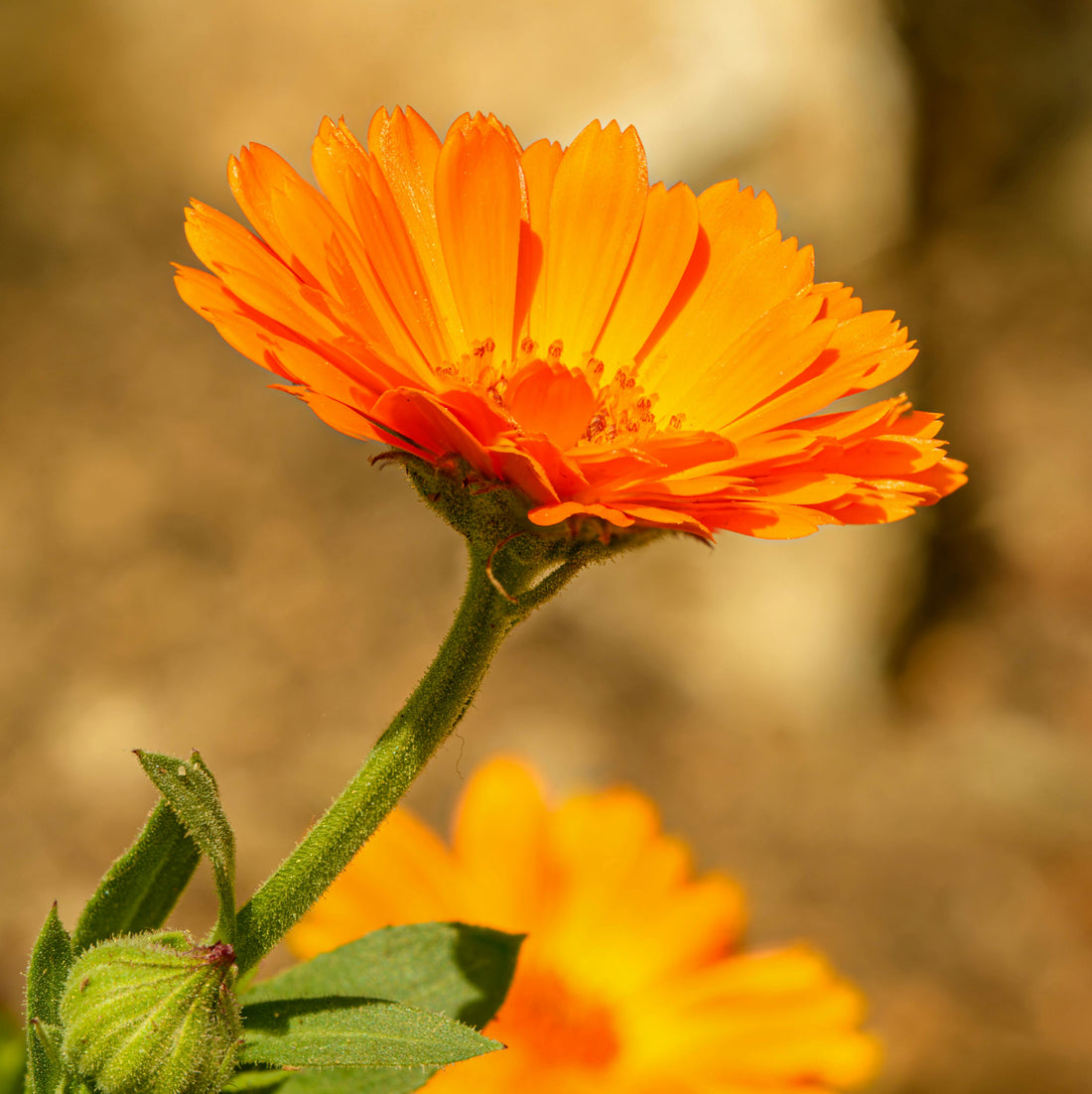
Calendula
Share
Calendula officinalis, a well known polychrest (multi-purpose) herb. Known as one of the most versatile plant medicines in Herbal Medicine. A personal favourite of mine is 'The Mother of all mothers'. Her essence is bright, pure, and caring.
Calendula officinalis is confusingly sometimes known as marigold or pot marigold, although completely unrelated to the plant marigold which is a part of the genus Tagetes. Calendula officinalis is one of the best herbal allies to have in your at home apothecary. The confusion between calendula and its nickname ‘Marigold’ can sometimes lead to identifying the plant Calendula Officinalis incorrectly, so be thorough with analyzing when identifying. The distinctive features are their petals, Calendula officinalis’ petals are slender whilst marigold petals are umbrella-like. Calendula is a perennial plant whilst marigold is an annual.
Folklore
The name Calendula officinalis comes from the Latin word “calens” which translates to the “first day of the month” implying the fact that Calendula flowers all year round. Calendula symbolises grief, remembrance, and despair and to the contrary, it is also a symbol of joy, hope, health, passion, and positivity. Calendula is also associated with the third eye chakra also known as Ajna or the 6th chakra. Ajna is located in the center of the head, parallel to the middle of your eyebrows. Ajna is linked to awareness, intuition, the witness within us, or our inner teacher and guide.
Actions
Contains properties that are:
- - anti-inflammatory
- - antibacterial
- - antiviral
- - anti-fungal
- - High in antioxidants
- - Mildly astringent
Medicinal Uses
Calendula has a special affinity with the skin and the gut. It is a gentle yet potent wound healer for both these systems. Healing most skin ailments due to its antibacterial, antifungal, antiseptic, vulnerary, anti-inflammatory, and antioxidant properties. Calendula is a soothing, hydrating, and mildly astringent plant that is nourishing and cleansing.
Often when we have ailments or health issues present in the gut this will generally be illustrated on the skin and vice versa, if there are skin issues present it all leads back to the gastrointestinal tract. Herbal allies like Calendula can be very helpful for conditions of either the skin or the gut. In Ayurveda, Western herbalism, Chinese Medicine, and many other ancient traditions of medicine digestion is the center of our life force energy. The way we assimilate food is usually a direct correlation to the way we assimilate life itself. We eat food, then our bodies metabolise the food back into basic structures that we then turn into energy to breathe and be life itself.
Because of Calendula's astringing actions, it tightens the capillaries making it an effective plant for healing varicose veins, wounds, cuts, scratches, bruises, burns, and many other skin conditions.
The parts of Calendula that are used medicinally are the calyx and flowering heads. Although in Vedic medicine it is said that the leaves also contain medicine value, having anti-inflammatory, antipyretic, antimicrobial, and antiepileptic effects, they make delicious salad fillers so don’t disregard of them.
Energetics of Calendula
Calendula is a gently warming plant but also has mildly bitter actions. It's slightly drying but also moistening to the skin and digestive tract. Technically Calendula officinalis has neutral energetics, meaning it can be useful for any person with any constitution. Bitter herbs help us to digest food and using bitter herbs half an hour before we eat can have significant effects on our ability to produce digestive juices. More digestive juices generally means better digestion. So Calendula tea or tincture can be beneficial the hour before kai.
Calendula supports and heals the digestive tract and works with the liver. Calendula is a lymphatic supporting herb due to its gently warming and drying nature. Supporting our lymphatic system is so important, if you don’t have the time for lymph massage bathing in a tea of this gorgeous plant or drinking it regularly can be beneficial to stimulate the flow of lymph. Its gentle actions are great for babies and elders, It helps most skin conditions from cradle cap to acute conditions like psoriasis.
The references for this blog of information:
- Bartrams Encyclopedia of Herbal Medicine by Thomas Bartrum
- Encyclopedia of Herbal Medicine by Andrew Chevallier’s
- Medical Herbalism The Science and Practice of Herbal Medicine by David Hoffmann
- The New Age Herbalist by Richard Mabey
- The new holistic herbal David Hoffmann
